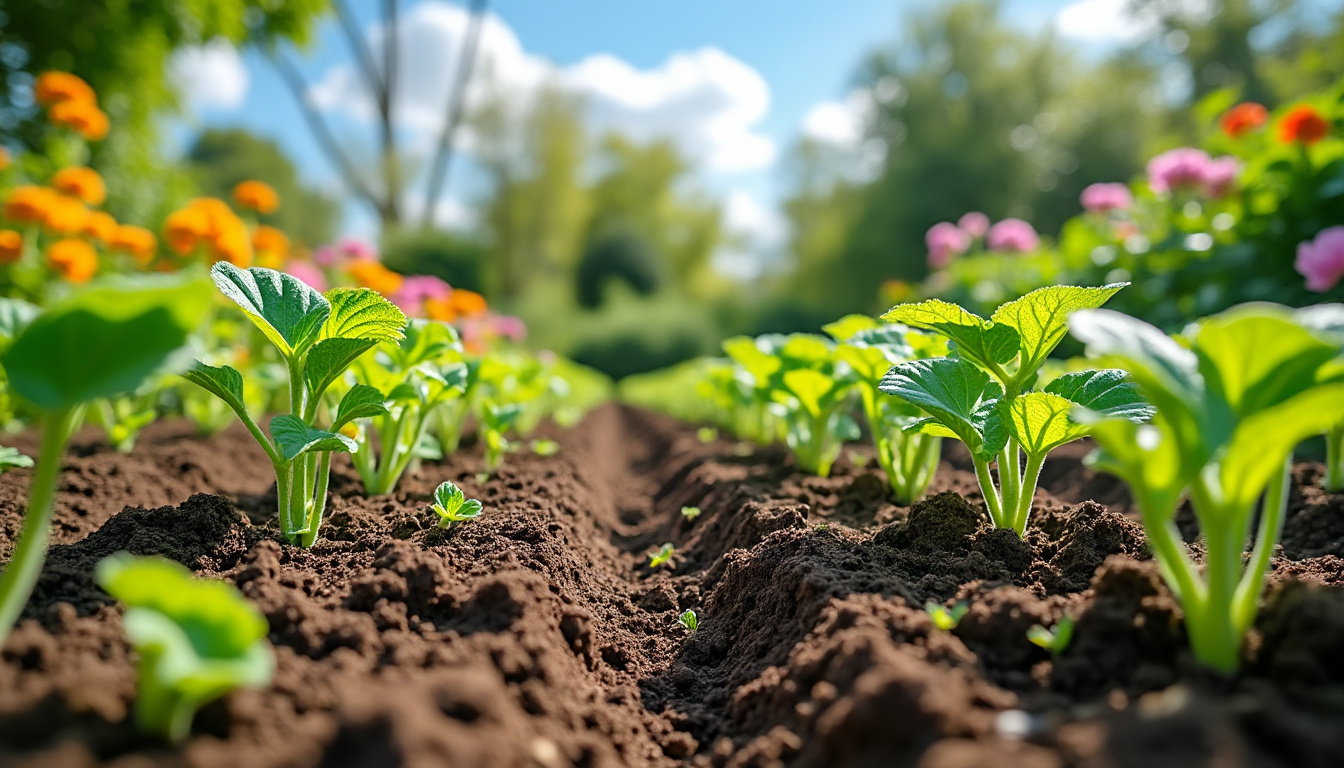A successful garden begins with the right timing, especially when it comes to planting courgettes. As a staple in many kitchens, courgettes, or zucchinis, are favored for their versatility and high yield. Understanding when to sow these seeds outdoors can set the stage for a flourishing harvest that delights the senses. This guide will navigate through the essential factors for planting courgettes, including ideal conditions, preparation, and care.
Understanding the Optimal Time for Planting Courgettes
In order to achieve a healthy crop, timing is critical. Typically, courgettes flourish in warm weather, making it essential to plant them after the last frost. It is advisable to check local frost dates as they can vary significantly across regions. The right temperature range for planting courgettes is between 70°F and 90°F (21°C to 32°C). Planning to plant them during this period ensures robust growth and fruit production.
Soil and Site Preparation
Preparing the garden bed is a crucial step that should not be overlooked. Courgettes thrive in well-drained, fertile soil enriched with organic matter. The ideal pH level is slightly acidic to neutral, ranging from 6.0 to 7.0. Incorporating compost or well-rotted manure before planting enhances soil fertility, providing essential nutrients that support early growth.
Moreover, selecting a sunny site is vital for courgettes, as these plants need at least 6 to 8 hours of direct sunlight daily. This exposure not only fosters strong stems but also cultivates a healthy yield throughout the growing season.
Seeds vs. Seedlings: Choosing How to Start
There are two common methods for starting courgettes. In cooler climates, starting seeds indoors 2 to 3 weeks before the last frost enables gardeners to get a head start. Conversely, warmer regions can benefit from direct sowing into warmed soil once the frost date has passed.
Spacing and Planting Depth
When planting, it is crucial to ensure adequate spacing to allow for the growth habit of courgettes. Seeds or seedlings should be spaced 2 to 3 feet apart to prevent overcrowding. Planting depth is another factor; seeds should be sown approximately 1 inch deep in small mounds or rows. If sowing multiple seeds in one spot, thinning is necessary to retain the healthiest seedling.
Maintaining Healthy Growth
To nurture courgettes, implement a watering regimen that maintains consistent moisture. Ideally, 1 to 2 inches of water per week is recommended, especially during dry spells. Targeting the base of the plants while avoiding wet foliage mitigates the risk of fungal diseases.
| Action | Frequency |
|---|---|
| Watering | 1-2 inches per week 🌧️ |
| Fertilizing | Every 3-4 weeks 🍂 |
| Weeding | Regularly 🚜 |
Pest Management Strategies
Courgettes can be susceptible to pests such as aphids and cucumber beetles. Regular monitoring is essential; employing organic pest control methods can help maintain a healthy crop. Additionally, ensuring good air circulation around the plants prevents the occurrence of diseases like powdery mildew.
When to plant your first early potatoes for a successful harvest
The Joy of Harvesting Courgettes
Harvest courgettes when they are young and tender, typically between 6 to 8 inches long. Regular harvesting encourages plants to produce more fruit. Proper post-harvest storage involves refrigeration for about a week, and for longer preservation, consider blanching and freezing the excess.
Culinary Uses of Courgettes
Courgettes are not only easy to grow but also versatile in the kitchen. They can be grilled, sautéed, or spiralized into noodles, adding a healthy touch to various dishes. The culinary flexibility of courgettes makes them a favorite for home cooks and chefs alike.
Frequently Asked Questions
Here are some common inquiries regarding courgettes:
- What is the best time to plant courgette seeds? Plant them after the last frost date when the soil has warmed up.
- How deep should courgette seeds be planted? Seeds should be sown around 1 inch deep.
- How much space do courgette plants need? Space them 2 to 3 feet apart for adequate growth.
- What pests should I watch for? Common pests include aphids and cucumber beetles.
- When is the best time to harvest courgettes? Harvest them when they are 6 to 8 inches long and still tender.
By embracing these principles, nurturing courgette plants becomes an enjoyable endeavor. Whether utilizing GardenCo products for planting or engaging with the GreenThumb community for tips, the journey of growing courgettes is one that brings both satisfaction and sustenance.
















